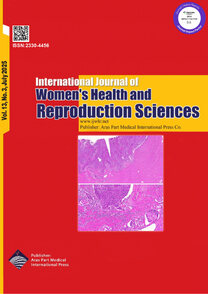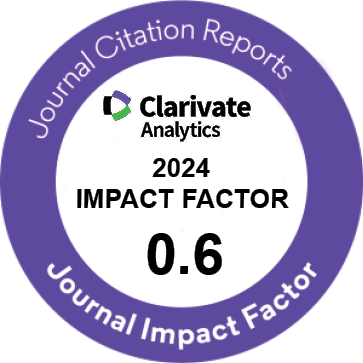| Original Article | |
| Is Not It the Time to Change the Treatment of Intermediate-Risk Patients Suffering From Gestational Trophoblastic Neoplasia? | |
| Setareh Akhavan1, Mitra Modarres Gilani1, Azamosadat Mousavi1, Sahrzad Sheikh Hasani1, Fahimeh Nokhostin2 | |
| 1Gynecology Oncology Department, Vali-Asr Hospital, Tehran University of Medical Sciences, Tehran, Iran 2Department of Obstetrics and Gynecology, Faculty of Medicine, Shahid Sadoughi University of Medical Sciences, Yazd, Iran |
|
|
IJWHR 2020; 8: 153-157 DOI: 10.15296/ijwhr.2020.24 Viewed : 11318 times Downloaded : 2934 times. Keywords : GTN, Intermediate risk, Chemotherapy resistance |
|
| Full Text(PDF) | Related Articles | |
| Abstract | |
Objectives: The present study attempted to provide a clear view of gestational trophoblastic neoplasia (GTN) with the focus on resistance to treatment approaches in Iran. Materials and Methods: This retrospective cohort study reviewed the medical records of 272 patients with the definitive diagnosis of GTN referring to Imam Khomeini hospital in Tehran during 2007-2017. Results: The mean age of participants was 29.19 ± 7.46 years. The abnormal uterine bleeding (AUB) was the most common clinical manifestation in 64.3% of patients. Regarding the risk scoring condition according to the World Health Organization criteria, 77.6%, 9.1%, and 13.3% were categorized as low-, intermediate-, and high-risk cases. Single therapy with methotrexate was used in 22.8% of patients and actinomycin-D was planned for 42.3% whereas 11.0% and 1.5% were considered for treatment with the EMA-CO (Etoposide, methotrexate, actinomycin D, cyclophosphamide, vincristine) and EMA-EP (Etoposide methotrexate and actinomycin-D/etoposide and cisplatin) regimens, respectively. Good response to methotrexate was 66.7% but it was 83.6% in the ACT group (P = 0.001). The resistance to single-agent chemotherapy in low- and intermediate-risk groups was 16% and 92%, respectively. In addition, 20.2% of patients in stage one had tumor invasion pattern in the uterus in pretreatment Doppler ultrasonography, but 52% and 30% had resistance to chemotherapy treatment in invasive and noninvasive groups, respectively (P = 0.008). Conclusions: In general, due to the high resistance of the intermediate-risk subgroup to a single therapy, a combination therapy may be more useful to treat this disorder. The close association between tumor invasion pattern in the uterus in Doppler ultrasonography and drug resistance can be considered as a new criterion for tumor risk scoring. |
Cite By, Google Scholar
Google Scholar
PubMed
Online Submission System
 IJWHR ENDNOTE ® Style
IJWHR ENDNOTE ® Style
 Tutorials
Tutorials
 Publication Charge
Women's Reproductive Health Research Center
About Journal
Publication Charge
Women's Reproductive Health Research Center
About Journal
Aras Part Medical International Press Editor-in-Chief
Arash Khaki
Mertihan Kurdoglu Deputy Editor
Zafer Akan























